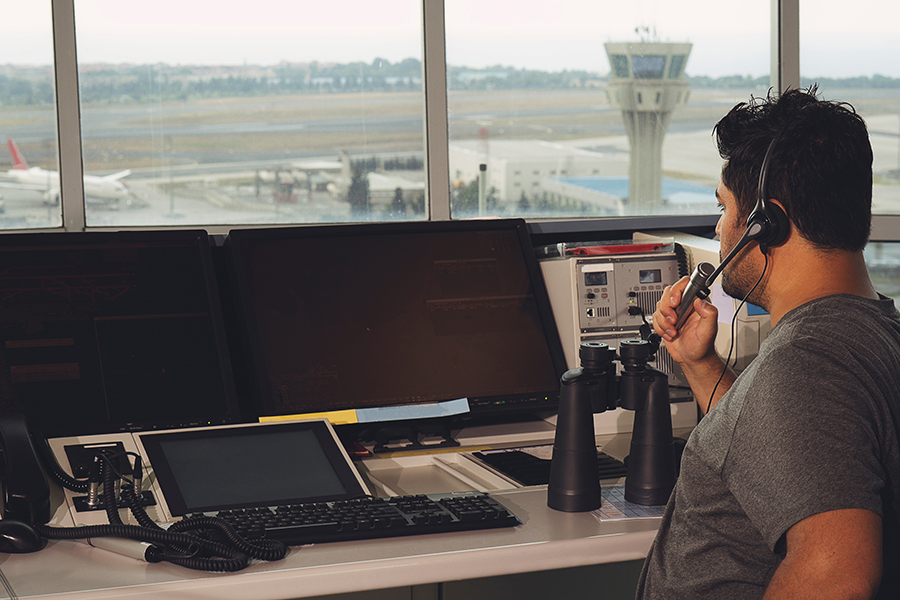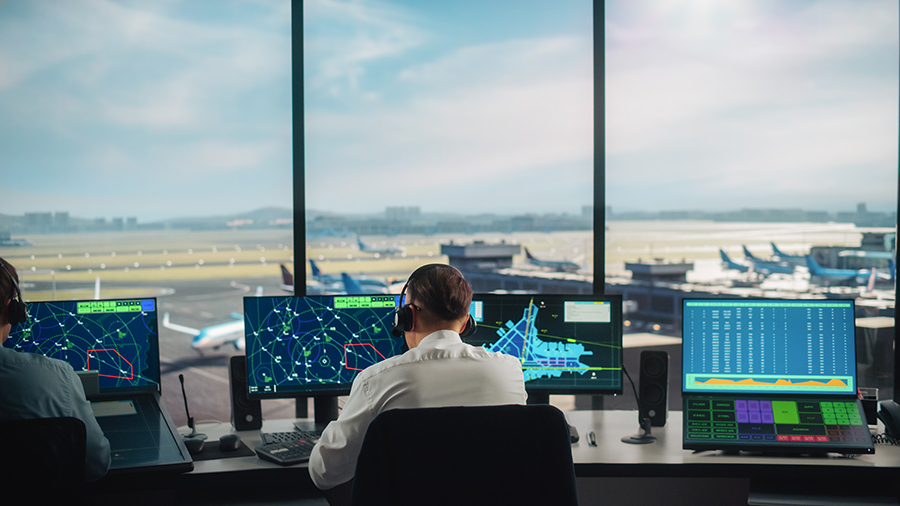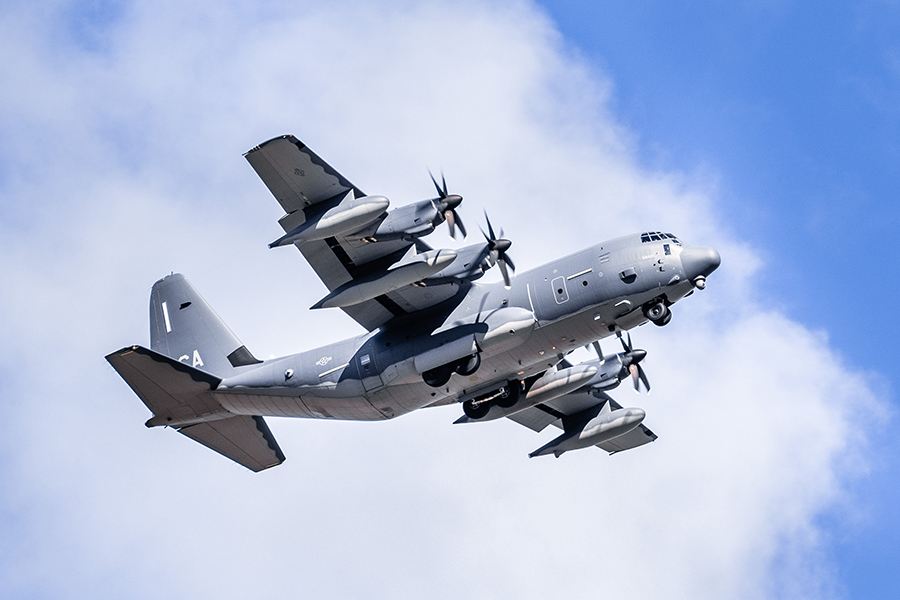You may have wondered how air traffic control can distinguish between different aircraft on their radar screens. The answer is through the use of squawk codes. And, some codes are more important than others! Today we will present you with a squawk codes list detailing some common codes used in aviation and a detailed explanation of their meaning.
What is a Squawk Code?
Squawk codes are four-digit codes ranging from 0000 all the way through to 7777 that are set on an aircraft transponder. These unique identifiers allow air traffic control units to distinguish between different aircraft. These work with mode A, mode C, and mode S transponders.
What is a transponder?
This term is an abbreviation of transmitter-responder, a piece of equipment used to identify and fix an aircraft’s position, along with other data, by a radar.
Why are they used in aviation?
Well…
In the early days of radar, air traffic control was a simple affair.
The radar would fire a microwave beam into the air, which would be reflected by aircraft, presenting the controller with a ‘dot’ on their radar display.
However…
As aviation grew in popularity, the skies became quite busy. Suddenly there were a lot of dots, and knowing which dot belonged to which aircraft became complicated.
A new system was designed to make it clearer.
A transponder works as follows.
- A unique four-digit code is assigned to an individual aircraft by air traffic control and set in the transponder. This is called a ‘squawk’ code.
- A ground-based secondary surveillance radar sends a radio interrogation signal to the transponder.
- On receiving this interrogation, the transponder transmits its identifying code along with other relevant data back down to the radar
- The data received is displayed on an air traffic controller’s radar screen.
The type of data displayed by the transponder varies depending on the fitted type. Here’s a quick table showing the basic outline of how different transponders work: –
| Type of Transponder | Data Provided |
| Mode A | Squawk code and identification |
| Mode C | Squawk code, identification, and pressure altitude |
| Mode S | Squawk code, selective identification by air traffic control, pressure altitude, enhanced surveillance data (such as azimuth data), Automatic Dependent Surveillance Broadcasting (ADSB), Traffic Collision Avoidance (TCAS) |
As you can see from the above table, Mode S contains much more data than the other transponder modes. Therefore, it is the most widely used system by commercial aircraft globally. This is because it allows air traffic controllers to ‘filter’ their results, leading to less clutter.
While squawk codes are designed to be unique to each aircraft, quite a few have a common use.
Below, you’ll find a list of squawk codes that are commonly used in aviation.
The Most Commonly Used Codes
Of course, there are lots of possible squawk codes that you could be assigned when using a transponder. However, there are some that you will definitely need to know.
| Squawk Code | Squawk Code Meaning |
| 1200 | VFR traffic |
| 7000 | VFR Aircraft with no other code assigned |
| 7500 | Hijacked Aircraft |
| 7600 | Aircraft with Radio Failure |
| 7700 | Aircraft in an Emergency State |
The final three are the most important. By setting them on your transponder, you will signal to air traffic control that there is an issue on board, and it will cause a great deal of commotion on the ground.
Here’s some more detail on what these codes mean…
What Does it Mean to Squawk 7500?

7500 is the squawk code set on a transponder when the airplane is subject to unlawful interference or hijack.
Hijacking situations are not all that common; however, they do happen. Yes, even on light aircraft!
This code allows the pilot to discretely inform ATC that the airplane security has been compromised without it being announced on the radio for all to hear. Depending on the severity of the incident, the following might happen: –
- The airplane could be intercepted and escorted by fighter jets
- On landing, the police and other authorities will be waiting to meet the aircraft
- Air traffic control will keep the airplane clear of all other traffic
- Air traffic control may completely close the airport to which you are flying.
In light of the above, it should be obvious that you must only set 7500 as a squawk code for genuine reasons.
What Does it Mean to Squawk 7600?
7600 is the squawk code reserved for aircraft that have suffered a radio communication failure.
By setting this code, you will alert air traffic control that you cannot utilize voice communication.
The degree to which this will affect you depends on the severity of the failure. It may be possible that you can hear ATC but not transmit. In this case, air traffic control may ask you to ‘squawk ident’ in response to their transmission.
‘Squawk ident’, what does that mean?
Most transponders have a small button on the panel that says ‘ident’. By pressing this button, your transponder will transmit a signal to the controller, causing your particular aircraft to ‘flash’ on their screen.
If you can’t transmit or hear radio messages, options are still open to you. You can find the loss of communication procedures here. When close to the airfield, keep a good lookout for light gun signals from air traffic control!
What Does it Mean to Squawk 7700?
Setting a squawk of 7700 on the transponder shows that the aircraft is presently dealing with an emergency. The pilot can set it proactively or at air traffic control’s request following a ‘pan’ or ‘mayday’ call.
The squawk code 7700 is a ‘catch all’ code used for any emergency scenario. The reasons why you would want to select a squawk of 7700 could be as follows: –
- Medical emergency onboard
- Engine failure
- Low/minimum fuel
- Bird strike
- Airframe damage
- Severe icing
- Fires
- Flight control problems
- Depressurization
The above list is not exhaustive. 7700 can be set as the squawk code for any emergency situation on the aircraft. AIM 6-1-2 states an emergency is “a distress or urgency condition as defined in the Pilot/Controller Glossary”.
What does setting 7700 on the transponder enable you to do?
Essentially anything to ensure that the airplane is operated safely. It is one of the few occasions where deviations from the rules are allowed. AIM 6-1-1 even states: –
“The pilot-in-command of an aircraft is directly responsible for and is the final authority as to the operation of that aircraft. In an emergency requiring immediate action, the pilot-in-command may deviate from any rule in 14 CFR Part 91, Subpart A, General, and Subpart B, Flight Rules, to the extent required to meet that emergency.”
However, your actions will have to be justifiable afterward. So act responsibly.
If you squawk 7700, you will likely have the air traffic controller contacting you, so be prepared. As a bare minimum, they will want the following information: –
- The aircraft registration
- The present position
- The nature of the problem
- The planned destination
- The number of souls on board
- The remaining fuel duration
Want an easy way to pass information to air traffic control information in an emergency?
Remember the acronym “NITS”.
It stands for the following: –
N – Nature of the Problem
A brief description of the problem you are facing, it doesn’t need to be too detailed at this stage
I – Intentions
Where you are going and what you intend to do.
T – Time
This is information telling ATC when you expect to be making a landing. You can also use this as a prompt to tell them your fuel endurance.
S – Special Instructions
This part of your briefing to air traffic control can be used to cover any other points. In a medical emergency, you might request an ambulance on arrival. Or, you might want to request a different runway than the one normally in use. Another instruction could be to simply tell them to standby for further information.
Why Squawk Codes Matter

As we are sure you are already aware, air traffic controllers (and their displays) contain a lot of information, especially in busy airspace. Each air traffic controller is assigned an airspace sector. This is a great way to break large areas of high-volume airspace into more manageable ‘chunks’.
These sectors’ limits are defined laterally (like lines on a map) and vertically… You can think of these a little like layers on a cake.
Here’s why squawk codes (especially the ones given in our squawk code list) are important.
Each controller will apply filters to their radar screen, so they only deal with traffic in their sector. This prevents their screen from cluttering aircraft that aren’t actually in the airspace.
Setting an emergency squawk code turns these filters off for that particular airplane on ATC’s screen. This allows air traffic controllers to ‘see’ the aircraft, even if it isn’t directly operating in their sector. This will also allow them to anticipate emergency traffic entering their airspace later.
The List of Squawk Codes – 3 Easy Ways to Remember Them
There’s plenty of theory surrounding flying, and getting bogged down with information is easy. You’ll need to remember the squawk codes list under pressure, which isn’t the easiest. Here are 3 different ways to remember those vital squawk codes.
The Rhyming Method
Throughout aviation, you’ll find pilots using rhymes to remember detailed information. It makes for an easy way to remember the squawk code list. It goes something like this: –
“7-5, he can’t drive” (remember, 7500 relates to hijacking)
“7-6, get the radio fixed” (7600 is used for communication failure)
“7-7, gone to heaven” (while slightly macabre, 7700 is the code for all other emergency situations)
All in One Sentence
Here at Pilot Institute, we love to make things simple. How’s about a single sentence that will help you remember the emergency transponder code list?
Here it is.
“Hi Jack, I can’t talk; there’s an emergency.”
Why is this a great way to remember the squawk code list? Well…
“Hi jack” – (Hijack)
“Can’t talk” (communication failure)
“There’s an emergency” (Self-explanatory)
As long as you remember, the squawk code list starts from 7500, then 7600, then 7700. The above sentence is a great way to remember what squawk codes mean.
ICE
Finally, we have an acronym. Aviation is full of them; if you can’t beat them, join them.
As long as you remember “ICE,” you are good to go: –
- I – Interference with the aircraft
- C – Communication failure
- E – Emergency
It doesn’t get much simpler.
Final Thoughts
You don’t have to remember every squawk code, but by working your way through a squawk codes list, try to remember the ones you will need most often. Emergency squawk codes, in particular, are well worth remembering. Want to learn more about airplane systems and navigation? You are in the right place. Swing by our courses and learn more information taught by real pilots.



